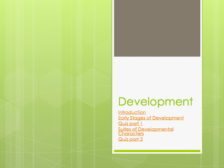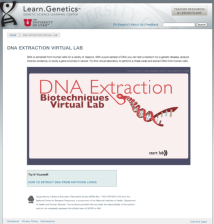Browse Resources
Science -- Instructional issues
Resources |
|---|
This PowerPoint tutorial is provided by Hartnell College and covers early biological development of organisms. In this tutorial, students will learn the basics of early development from fertilization through gastrulation and major differences in early development between taxonomic groups. The...
This 44-page resource, developed by the National Center for Optics and Photonics Education (OP-TEC), is one of three modules that cover optics and lasers in the biomedicine field. This module covers "the principles and applications of optical and laser scanning microscopes, confocal laser scanning,...
This 24-page resource, made available by Maricopa Advanced Technology Education Center (MATEC), is the instructor guide for a laboratory activity from the Digital Fundamentals course designed to "introduce the student to Xilinx software, Spartan 3E FPGA board, how to program in VHDL and create the...
Description:
The materials for this Digital Fundamentals course are provided by Maricopa Advanced Technology Education Center (MATEC). This course provides introductory information for students pursuing an Associate of Applied Science in computer programming or information technology. Topics covered...
This virtual lab from the Genetic Science Learning Center at the University of Utah provides an overview of DNA extraction, including what it's used for, illustrations, and an activity using cheek cells and laboratory equipment to isolate DNA. The lab is followed by a classroom activity that allows...
Module Description:
This module was created by the Center for Nanotechnology Education (Nano-Link) and covers dye-sensitized solar cells (DSC). "This device is essentially a photo-electrochemical cell, which means that a photo-induced chemical reaction causes electrons to travel from one material...
Collection description:
This collection, from the Nanotechnology Applications and Career Knowledge Support (NACK) Center at Pennsylvania State University), includes materials from the undergraduate laboratory course titled Materials in Nanotechnology. The course provides an overview of the...
This paper, commissioned by the 2011 summit on Community Colleges in the Evolving STEM Education Landscape, describes the outreach, recruitment, and mentoring strategies that can mitigate barriers and improve retention in transfer programs between two-year and four-year institutions in STEM...
This collection, provided by eSyst: Tools for Electronics Education, includes an 8-page student guide and a 6-page instructor guide for a Transmission Line Measurements lab. This lab "aims to familiarize students with common measurements on coaxial transmission lines." The lab includes a purpose,...
The Materials Science and Technology Teacher's Workshop (MAST) provides this lesson plan which will help students understand the characteristics of basic electronic devices such as diodes, rectifiers, photocells, thermistors, integrated circuits and transistors. Students will get the chance to...
|
| ← PreviousNext → |









